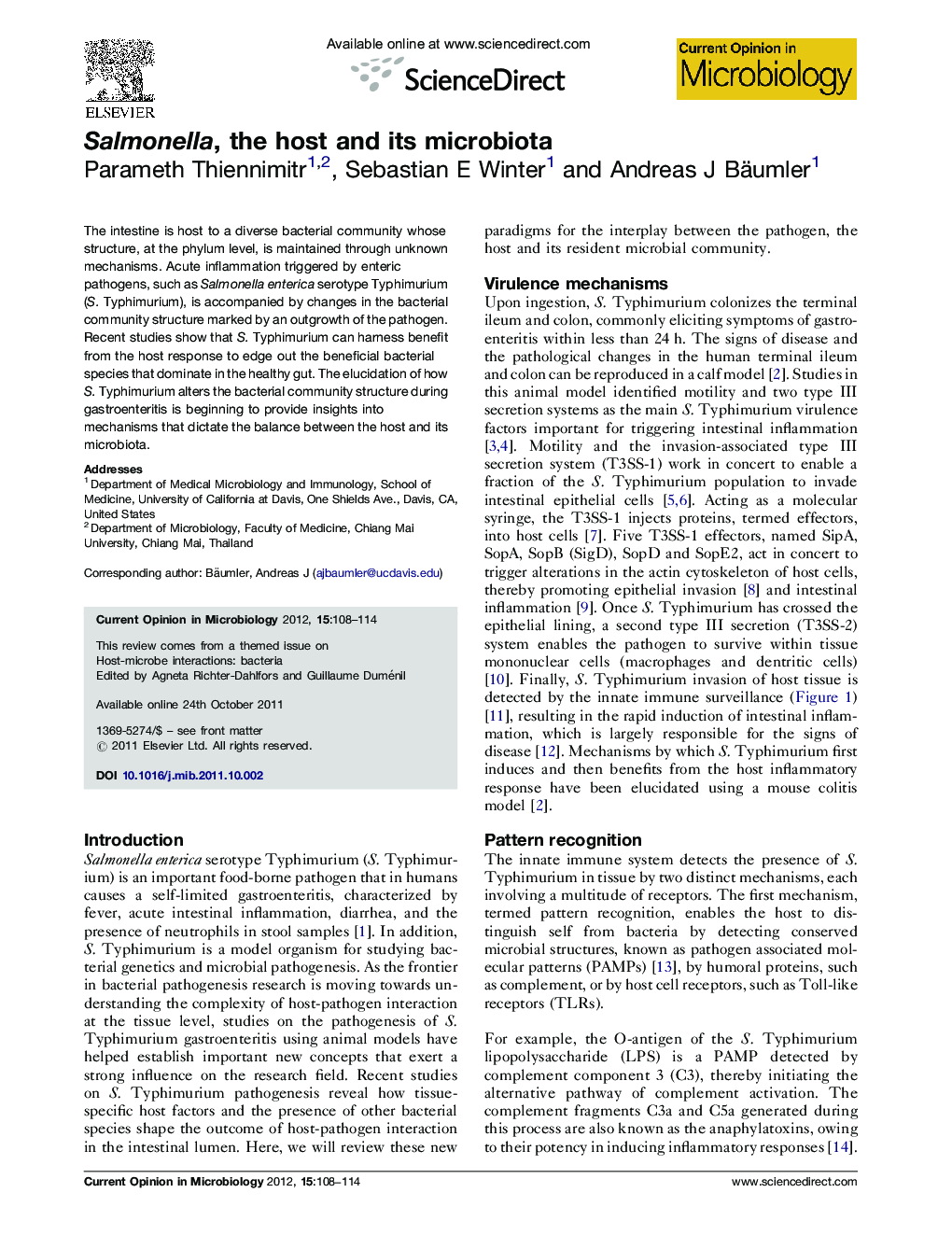| Article ID | Journal | Published Year | Pages | File Type |
|---|---|---|---|---|
| 3399198 | Current Opinion in Microbiology | 2012 | 7 Pages |
The intestine is host to a diverse bacterial community whose structure, at the phylum level, is maintained through unknown mechanisms. Acute inflammation triggered by enteric pathogens, such as Salmonella enterica serotype Typhimurium (S. Typhimurium), is accompanied by changes in the bacterial community structure marked by an outgrowth of the pathogen. Recent studies show that S. Typhimurium can harness benefit from the host response to edge out the beneficial bacterial species that dominate in the healthy gut. The elucidation of how S. Typhimurium alters the bacterial community structure during gastroenteritis is beginning to provide insights into mechanisms that dictate the balance between the host and its microbiota.
► Non-typhoidal Salmonella serotypes use their virulence factors to trigger intestinal inflammation. ► The response against Salmonella consists of macrophage activation, neutrophil recruitment and the epithelial release of antimicrobials. ► Neutrophil transepithelial migration and the epithelial release of antimicrobials enable Salmonella to edge out competing microbes. ► The deployment of virulence factors could be seen as an attempt to create a niche that favors growth of the pathogen.
